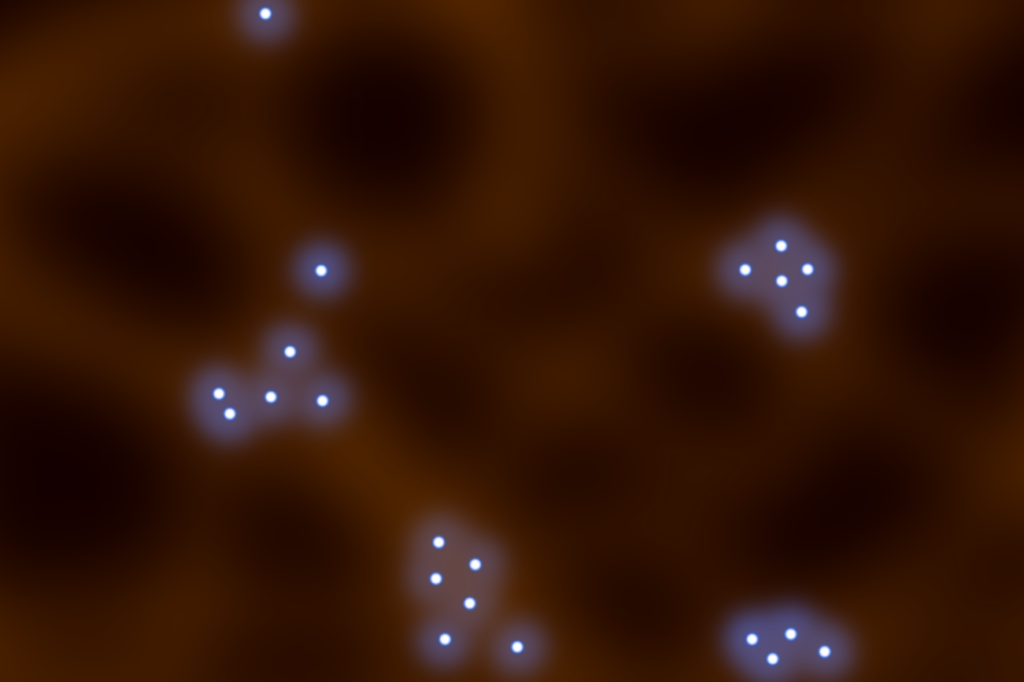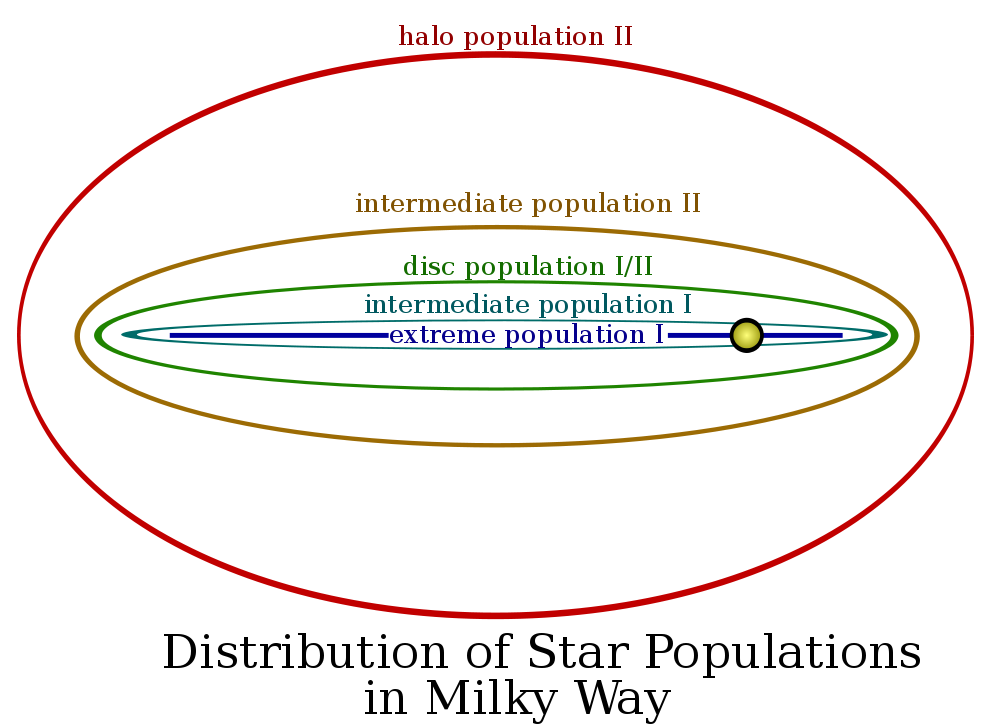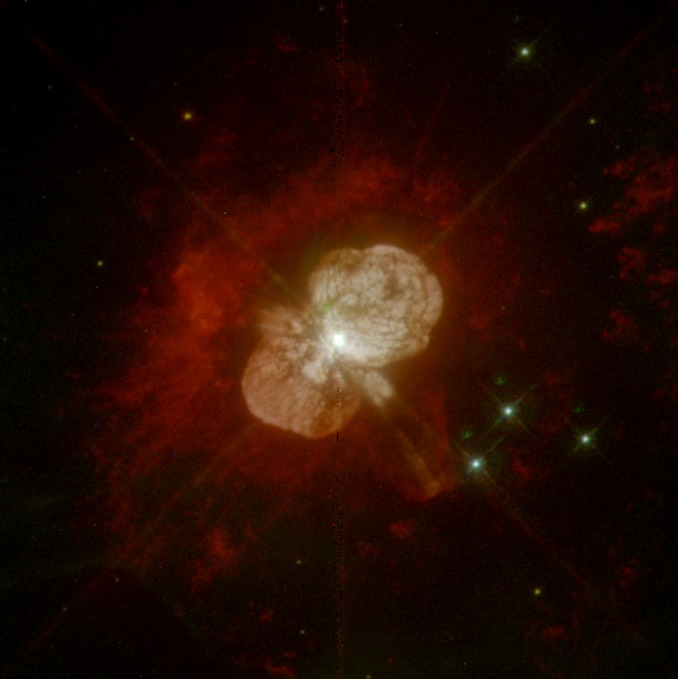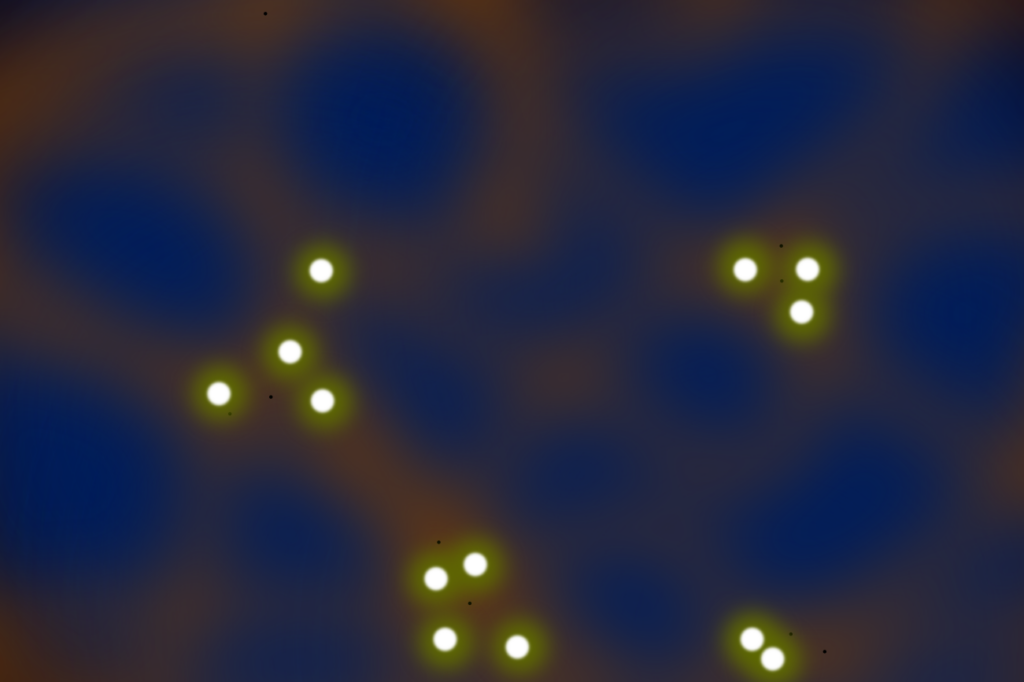
Introduction
We think that population III stars were the first stars that form after the big bang. As of today, no one has directly observed a population III star. We can only see the effects on the universe that they left behind. However from these observations, we can guess the properties of these stars such as how massive they were.
Recently, astrophysicists Katsuya Abe and Hiroyuki Tashiro published a paper regarding the effects of population III stars on the cosmic microwave background (CMB). This paper shows the results of their efforts in determining how abundant population III stars were in the early universe. Katsuya Abe and Hiroyuki Tashiro were able to get these results by analyzing data gathered by the Planck satellite.
A recap of stellar populations
Our sun and most of the stars in the disc of the Milky Way and other spiral galaxies are population I stars. These stars are rich in heavy elements (elements heavier than hydrogen and helium) formed in the cores of older stars. They are also the youngest population out of the 3 stellar populations we believe exist.
Population II stars are older than population I stars. Population II stars were formed during the time when heavy elements where not as plentiful in the universe as they are now. As a result, they do not show much signs of these heavy elements in their spectra. Most of the stars in globular clusters located in the halo of the galaxy are population II stars.

Population III stars are older than population II stars. We believe that population III stars are the first stars to form after the big bang. As of the time of this article, no one has directly seen a population III star. However, we know that such stars must exist to explain a number of things we see.
For example, how did the gas between galaxies (known as the intergalactic medium) became ionized? Also, where did the heavy elements in population II stars came from?
Population III stars
We think population III stars consist almost entirely of hydrogen and helium. They would have contained no heavy elements except for tiny amounts of lithium and beryllium formed by big bang nucleosynthesis. More interestingly, we also think that most population III stars are extremely massive, more then 100 times the mass of the sun.
We know that population III stars are extremely massive because of the conditions they form in. One of the factors that determines the mass of stars is how massive the cloud of gas that forms them has to be before it collapses under it’s own gravity. Warmer gas clouds need to be more massive before they start collapsing.
Heavy elements in today’s interstellar gas clouds are more effective at radiating away heat. This allows the gas clouds today to cool down to extremely low temperatures. The result is that they start collapsing into stars when they are not very massive. This forms stars like the sun that only have a tiny fraction of the mass of many population III stars.
In the time before the first stars, gas clouds are almost purely hydrogen and helium. This means that they cannot effectively radiate away heat and cool down like their modern counterparts. On top of this, the background temperature of the universe was much warmer. Thus preventing these clouds from cooling to temperatures that modern gas clouds could reach.
As a result, early gas clouds became very massive before collapsing into stars. The result of this is that population III stars were extremely massive and hot. The radiation they produced who have been immense and would have ionized the gases near them. They would produce even more radiation when they die. This is where Katsuya’s and Hiroyuki’s work focuses on.
A recap on how most massive stars die
To understand the biggest effects of population III stars on the universe, we must understand how massive stars die. Stars that are 8 to 17 times the mass of the Sun die by core collapse supernovae. Meanwhile, stars that are 18 to 100 times the mass of the Sun end as failed supernovae.
As massive stars near the end of their lives, they fuse heavier and heavier elements in their cores until they reach iron. Fusing iron into heavier elements consumes energy rather than produce it. Therefore, the star cannot fuse iron to produce energy. Meanwhile, more iron from the silicon fusing layer around the core falls onto the iron core making it more massive.
When the star’s core reaches 1.44 times the Sun’s mass, the electron degeneracy pressure that prevents the core from collapsing under it’s own gravity becomes overwhelmed. This causes the core to implode and then rebound causing a shockwave that travels outwards into the infalling outer layers.
If the star is between 8 to 17 times the mass of the Sun, the shockwave blows the star apart causing a supernova explosion. This leaves behind a neutron star. If the star is between 17 to 100 times the mass of the Sun, it becomes a failed supernova. The weight of the infalling outer layers overcomes the shockwave and most of the star collapses into a black hole.
How population III stars die (<130 solar masses)
We think that population III stars are more than 100 times the mass of the Sun. At those masses, stars do not die in the same way how smaller stars between 8 to 100 times the sun’s mass die. At those masses, the temperature in the star’s core is extremely high near the end of the star’s life. This means the photons emitted by the hot gases have a lot of energy.
The result is that a lot of these photons turn into electron-positron pairs. This is bad for the star as these photons have momentum. This causes them to exert pressure on the gas to counter gravity. Without these photons, the star’s core begins to collapse. This collapse causes the core’s temperature to skyrocket.
In stars that are between 100 to 130 times the mass of the Sun, this increase in temperature causes the rate of thermal nuclear fusion in the core to surge. This surge creates excess photons which stops the core from collapsing.
It also results in a shockwave that travels out through the outer layers and ejects some of it into space. This continues until the star’s mass drops below 100 times the mass of the sun. The star then continues evolving until it dies as a core collapse supernova.

How population III stars die (>130 solar masses)
We think many population III stars were more then 130 times the mass of the Sun. At a mass between 130 and 270 times the mass of the Sun, the collapse of the star is so violent it causes a runaway thermal nuclear fusion in the core.
The enormous amounts of energy produced destroys the entire star including it’s core. The result is a pair-instability supernova. Such supernovae so violent they do not leave behind a neutron star or a black hole.
Pair-instability supernovae are around 100 times more powerful than most core collapse supernovae. The energy from these supernovae help in re-ionization of what would become the intergalactic medium. As we shall see, the effects of these could be seen in the CMB.
For stars heavier than 270 times the mass of the Sun, the result is again different. The collapse of the core is so violent that the energy produced breaks apart atomic nuclei.
This uses up the energy that would otherwise have gone into increasing the temperature of the star’s core and thus increasing the rate of thermal nuclear fusion. The result is that the entire star collapses into a black hole.
We think that black holes created by this process eventually grow into the supermassive black holes that become the center of galaxies.
Re-ionization of the universe
As stated earlier, pair-instability supernovae produced by population III stars are extremely powerful. Katsuya’s and Hiroyuki’s work focuses on how they contribute significantly to the re-ionization of what would become the intergalactic medium.
When population III stars explode, the radiation they produce spreads out ionizing the material they encounter turning them into ionized gas. The result is growing bubbles of compressed ionized gas. As ionized gas scatters photons, cosmic microwave background photons that enter these bubbles have their polarization altered.

As the CMB radiation is electromagnetic radiation, it’s light has an electric and magnetic component. Photons scattered by ionized gas have their electric components altered. This causes dips in what astronomers call their e-mode spectrum.
By finding and counting these dips in the light from different parts of the CMB. Katsuya and Hiroyuki were able to get a rough estimate on the number of population III stars that where in the early universe.
Counting population III stars
In their paper, Katsuya and Hiroyuki find how abundant pair-instability supernova remnants were in the early universe. To quantify their results, Katsuya and Hiroyuki decided to find the fraction of matter that ended up in pair-instability supernovae.
This value is closely related to the number density of population III stars that were between 130 to 270 times the mass of the sun.
By performing a series of analysis on the data of the CMB taken by the Planck satellite, Katsuya and Hiroyuki were able to narrow down the abundance of pair-instability supernovae remnants formed in the early universe.
They found that the fraction of matter that became population III stars is equal to or less than 0.014%. According to Katsuya and Hiroyuki, this value cannot be higher than that as it would mean that population III stars would ionized all the gas in the universe. This would prevent more stars from forming.
Katsuya and Hiroyuki also realized that if the fraction of matter that became population III stars is less than 0.001%, population III stars would not have any noticeable effect on the CMB.
Conclusion
Population III stars gives us an example of how the universe look different at different ages. Today, most stars are comparatively small and most die by slowly blowing off their outer layers rather than ending as supernova explosions. In the past, most stars were very large. This caused them to have profound impacts on their environments when they die.